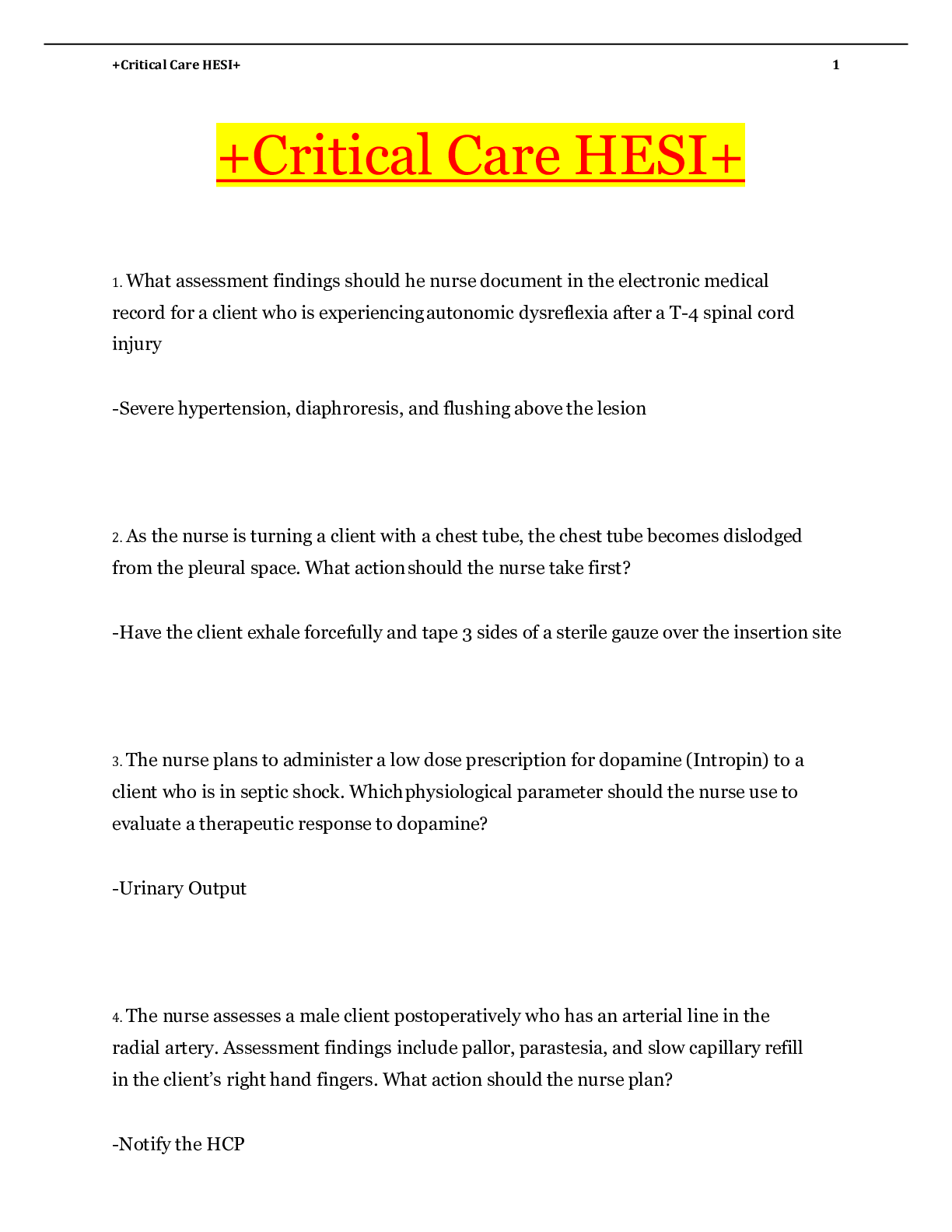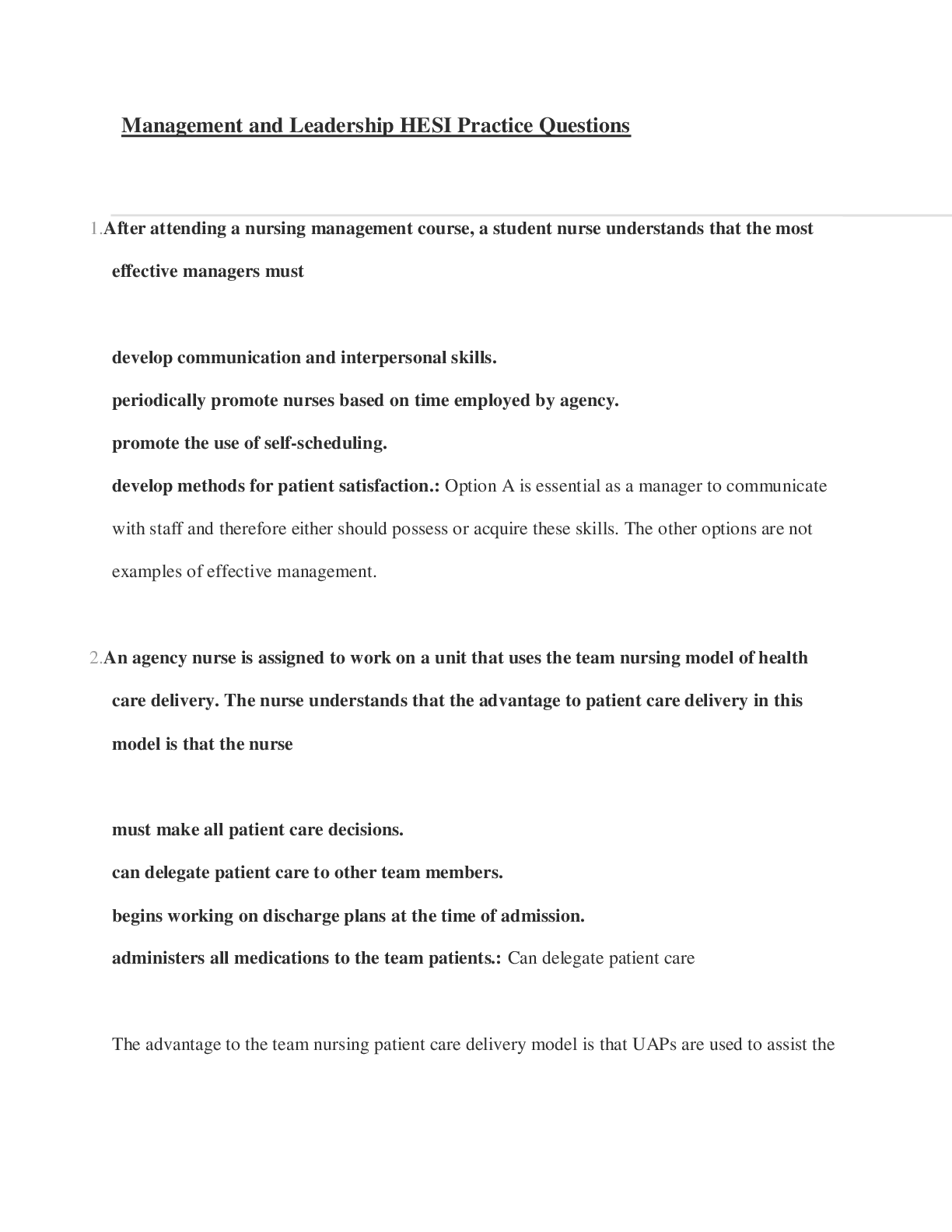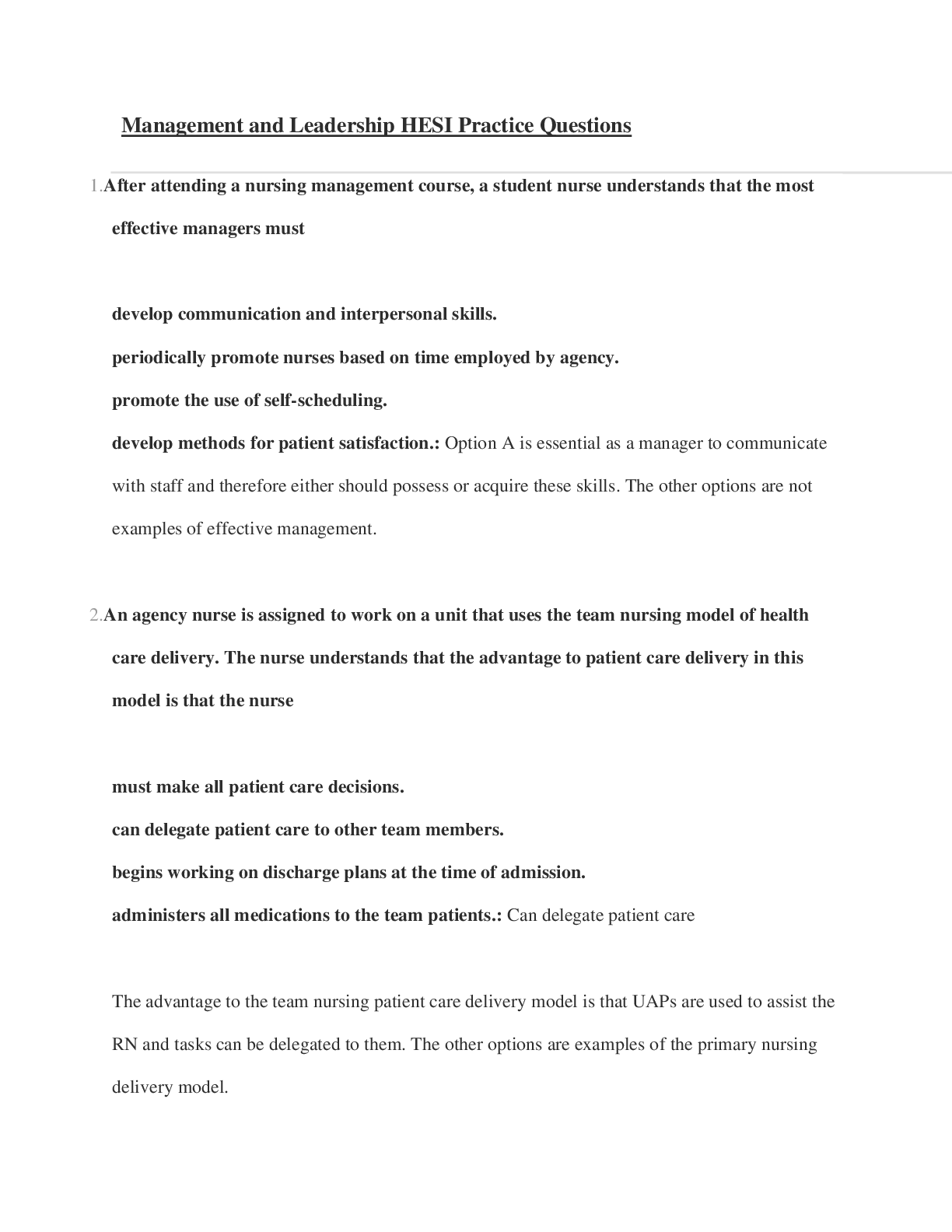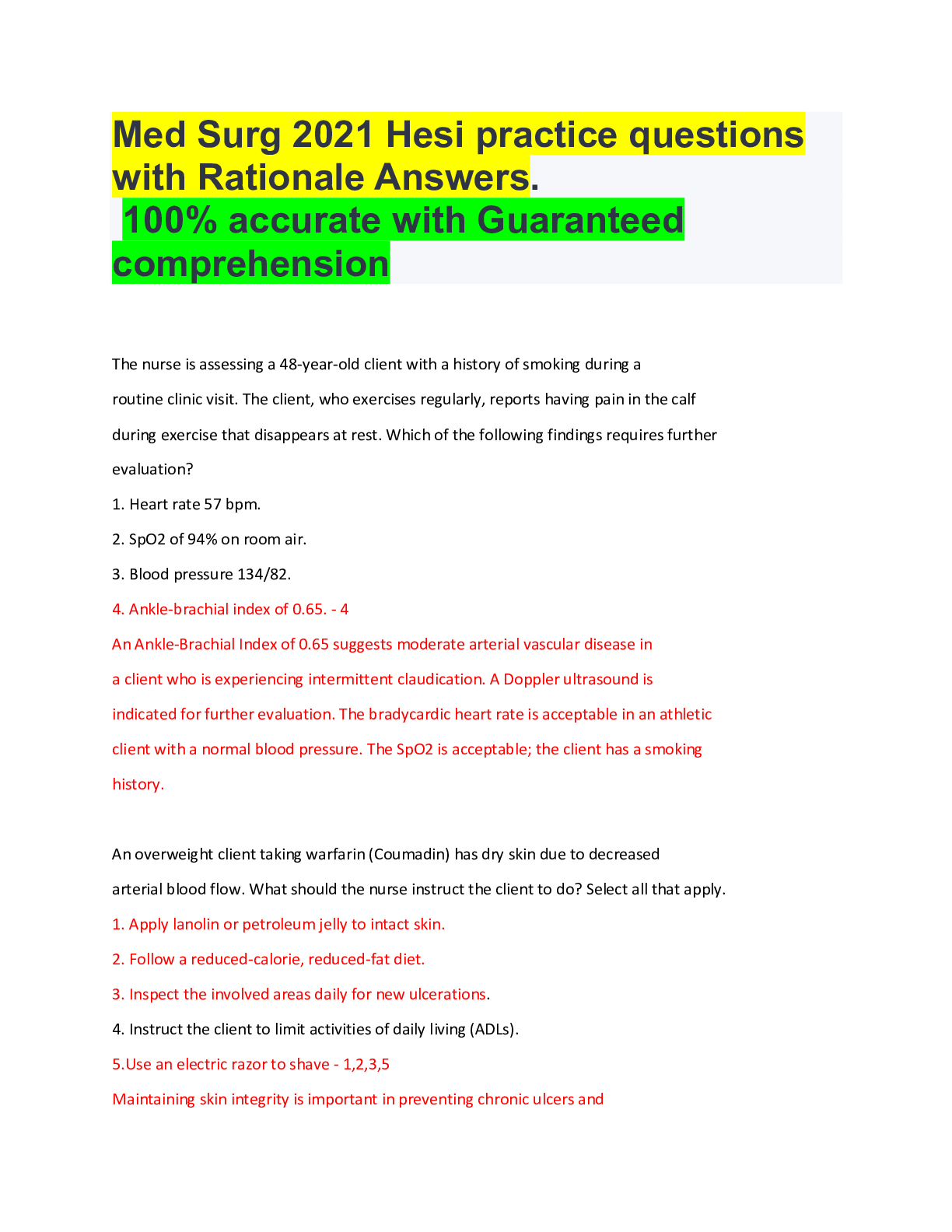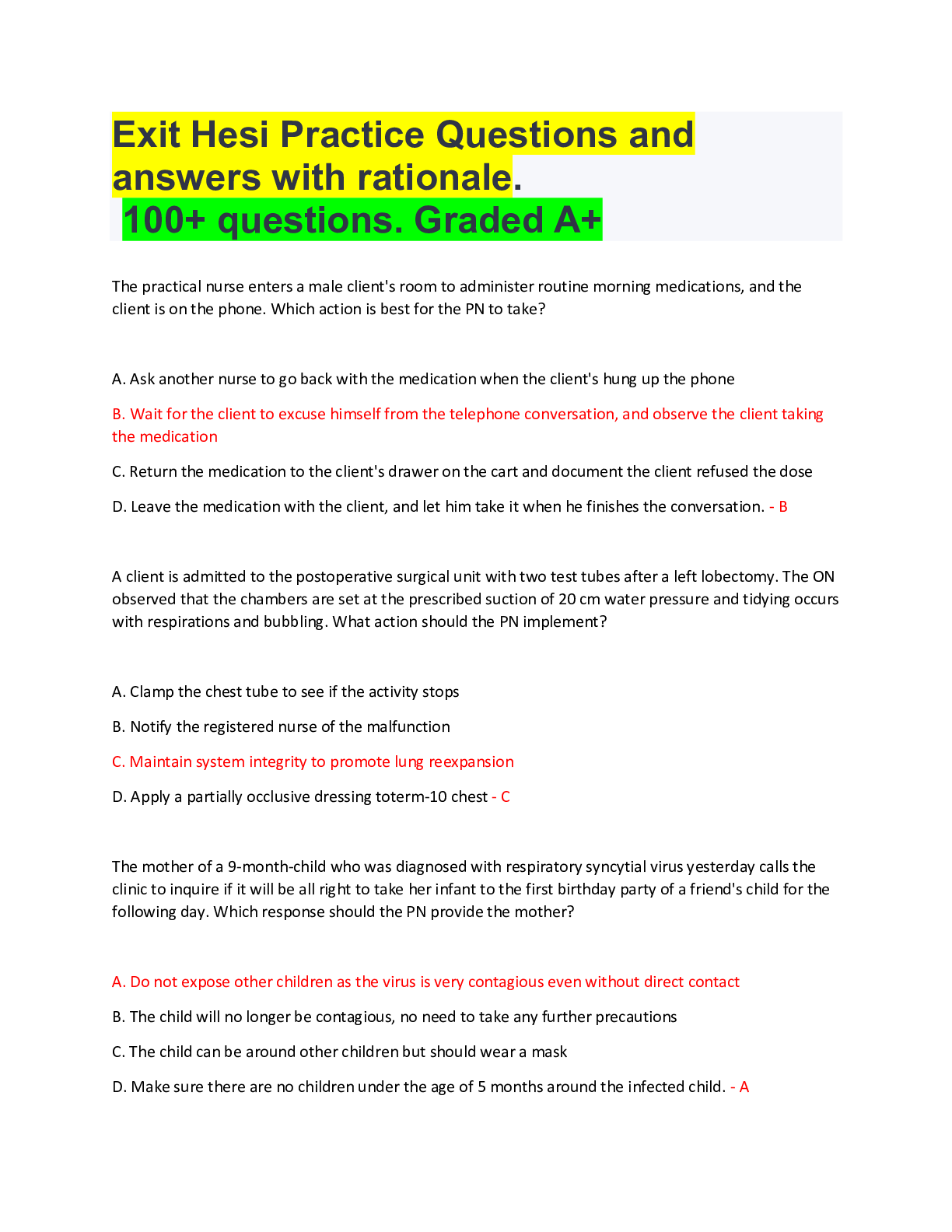CRITICAL CARE HESI PRACTICE QUESTIONS & ANSWERS
Document Content and Description Below
CRITICAL CARE HESI PRACTICE QUESTIONS & ANSWERS 1. A nurse is assessing body alignment. What is the nurse monitoring? The relationship of one body part to another while in different a. positions ... b. The coordinated efforts of the musculoskeletal and nervous systems c. The force that occurs in a direction to oppose movement d. The inability to move about freely ANS: A The terms body alignment and posture are similar and refer to the positioning of the joints, tendons, ligaments, and muscles while standing, sitting, and lying. Body alignment means that the individual’s center of gravity is stable. Body mechanics is a term used to describe the coordinated efforts of the musculoskeletal and nervous systems. Friction is a force that occurs in a direction to oppose movement. Immobility is the inability to move about freely. 2. A nurse is providing range of motion to the shoulder and must perform external rotation. Which action will the nurse take? a. Moves patient’s arm in a full circle b. Moves patient’s arm cross the body as far as possible c. Moves patient’s arm behind body, keeping elbow straight Moves patient’s arm until thumb is upward and lateral to head with d. elbow flexed ANS: D External rotation: With elbow flexed, move arm until thumb is upward and lateral to head. Circumduction: Move arm in full circle (Circumduction is combination of all movements of ball-and-socket joint.) Adduction: Lower arm sideways and across body as far as possible. Hyperextension: Move arm behind body, keeping elbow straight. 129 3. A nurse is providing passive range of motion (ROM) for a patient with impaired mobility. Which technique will the nurse use for each movement? a. Each movement is repeated 5 times by the patient. b. Each movement is performed until the patient experiences pain. c. Each movement is completed quickly and smoothly by the nurse. d. Each movement is moved just to the point of resistance by the nurse. ANS: D Passive ROM exercises are performed by the nurse. Carry out movements slowly and smoothly, just to the point of resistance; ROM should not cause pain. Never force a joint beyond its capacity. Each movement needs to be repeated 5 times during the session. The patient moves all joints through ROM unassisted in active ROM. 4. A nurse is performing passive range of motion (ROM) and splinting on an at-risk patient. Which finding will indicate goal achievement for the nurse’s action? CONTINUES... [Show More]
Last updated: 1 year ago
Preview 1 out of 3 pages
Instant download

Buy this document to get the full access instantly
Instant Download Access after purchase
Add to cartInstant download
Reviews( 0 )
Document information
Connected school, study & course
About the document
Uploaded On
Oct 14, 2022
Number of pages
3
Written in
Additional information
This document has been written for:
Uploaded
Oct 14, 2022
Downloads
0
Views
32

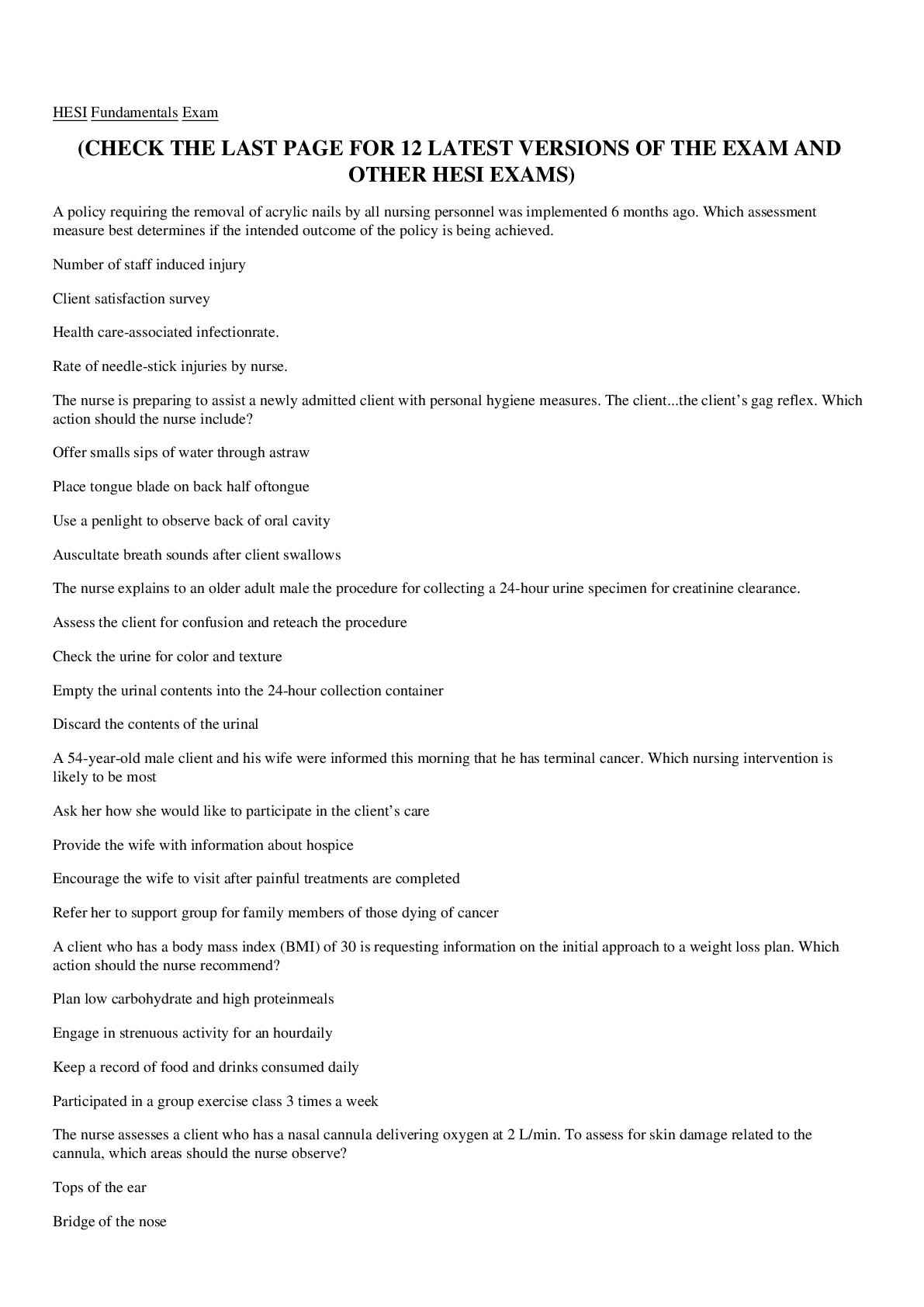
.png)
.png)


 (1).png)





